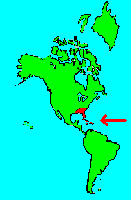SPECIES INFO
Dahoon (Ilex cassine) can be found in the lowlands of south eastern North America from Virginia through most of Florida almost to south eastern Texas. This species is also found in the Bahamas and Cuba. The leaf edges can be entire or toothed above the middle. The fruits can be red or yellow.Hollies (genus Ilex) are a group of 400 trees, bushes, and climbers that can have either smooth-edged or toothed leaves and evergreen or deciduous leaves. The leaves of all members of this genus are alternate. There are 28 species, one hybrid, and eight subspecies listed in the Kartesz listing of greater North America which includes United States, Canada, Hawaii, Greenland, Puerto Rico and the U.S. Virgin Islands. Several species with bright red fruits and evergreen leaves are used as Christmas decorations.
Holly Family (Ilicaceae to Aquifoliaceae) is found in eastern North America south into most of Mexico and most of Central America, and then further south into most of South America. This family is absent in the dry areas south of the Amazon, and also absent in western South America on the west slope of the Andes to the sea.
This family is a small family of about 420 species with greatest distribution in the New World tropics. Most species are evergreens. There are 28 species in the Ilex genus and one species in the Nemopanthus genus growing in greater North America.
Sapindales Order is a diverse group of mostly trees and shrubs. In older taxonomic works there were about 25 different families in this order. Some modern authors retain only about 10 families. This order is very widespread in the world, and seemingly only absent from a few dry deserts.
Dicots (Dicotyledoneae Class) are the predominant group of vascular plants on earth. With the exception of the grasses (Monocots) and the Conifers (Gymnosperms), most of the larger plants that one encounters are Dicots. Dicots are characterized by having a seed with two outer shell coverings.
Some of the more primitive Dicots are the typical hardwood trees (oaks, birches, hickories, etc). The more advanced Dicots include many of the Composite (Aster) Family flowers like the Dandelion, Aster, Thistles, and Sunflowers. Although many Monocots reach a very high degree of specialization, most botanists feel that the Dicots represent the most advanced group of plants.
Seed plants (Phylum Embryophyta) are generally grouped into one large phylum containing three major classes: the Gymnosperms, the Monocots, and the Dicots. (Some scientists separate the Gymnosperms into a separate phylum and refer to the remaining plants as flowering plants or Angiospermae.)
For North American counts of the number of species in each genus and family, the primary reference has been John T. Kartesz, author of A Synonymized Checklist of the Vascular Flora of the United States, Canada, and Greenland (1994). The geographical scope of his lists include, as part of greater North America, Hawaii, Alaska, Greenland, Puerto Rico, and the Virgin Islands.
Kartesz lists 21,757 species of vascular plants comprising the ferns, gymnosperms and flowering plants as being found in greater North America (including Alaska, Hawaii, Greenland, Puerto Rico and the Virgin Islands.
There are estimates within the scientific world that about half of the listed North American seed plants were originally native with the balance being comprised of Eurasian and tropical plants that have become established.
Plant kingdom contains a large variety of different organisms including mosses, ferns, and seed plants. Most plants manufacture their energy from sunlight and water. Identification of many species is difficult in that most individual plants have characteristics that have variables based on soil moisture, soil chemistry, and sunlight.
Because of the difficulty in learning and identifying different plant groups, specialists have emerged that study only a limited group of plants. These specialists revise the taxonomy and give us detailed descriptions and ranges of the various species. Their results are published in technical journals and written with highly specialized words that apply to a specific group.
On the other hand, there are the nature publishers. These people and companies undertake the challenging task of trying to provide easy to use pictures and descriptions to identify those species.

